2020 Porsche 911 Review
 View 285 more photos
View 285 more photos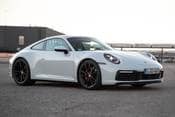 View 285 more photos
View 285 more photos View 285 more photos
View 285 more photos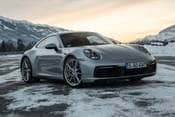 View 285 more photos
View 285 more photos View 285 more photos
View 285 more photos- Coupe
- Convertible
What's new
- Fully redesigned for 2020
- Many small changes to the exterior and a completely new interior
- Designed to be more comfortable over a wider variety of driving conditions
- Kicks off the eighth 911 generation
Edmunds Track Tested: 2020 Porsche 911 Carrera S
For years we've known that the Porsche 911 Carrera S expertly fills the middle ground between comfortable touring and scintillating performance. Its sharp responses and communicative feedback make it very easy to just hop in and get on with spirited driving. It's a satisfying sports coupe whether you're a seasoned veteran or relative newcomer. But what's the deal with the new 992 generation — is it better enough than the last?
To find out, we took a 2020 Porsche 911 Carrera S to the Edmunds test track. For reference, a 2017 911 Carrera S PDK hit 60 mph in 3.4 seconds in our testing, en route to an 11.4-second quarter-mile at 120.3 mph. Tough act to follow, no? Read on to see all of the numbers and information on the 992 C2S from our proprietary testing process, plus exclusive driving impressions from the best testing crew in the business.
2020 Porsche 911 Carrera S Performance Testing Results
Price as tested: $143,350
Date of test: 8/26/2019
Location: Los Angeles, CA
Odometer: 3,599
Powertrain: 3.0L Flat-6 Turbo | 8-Speed Automated Manual | RWD
Horsepower: 443 hp @ 6,500 rpm
Torque: 390 lb-ft @ 2,300 rpm
2020 911 Carrera S Acceleration
| Acceleration Test | Result |
|---|---|
| 0-30 mph | 1.4 sec |
| 0-45 mph | 2.2 sec |
| 0-60 mph | 3.2 sec |
| 0-75 mph | 4.5 sec |
| Quarter-mile | 11.3 sec @ 122.1 mph |
| 0-60 mph w/1 ft rollout | 3.0 sec |
"For launch control, be in Sport Plus with PSM off. Left foot on the brake and floor the accelerator. 'Launch Control Activated' will pop up on the right hand screen. Revs climb to 5000, and we had better luck letting them sit there for a couple moments, which possibly helps build turbo boost, knocking off a couple hundredths of a second to get down to 3.2 seconds to 60 mph. The quarter-mile is pretty much the same any way you run it, but this seems to have a positive effect on the launch. The launches are effortless and dead repeatable. They don't feel harsh on the powertrain, yet they push forward with impressive thrust, with no perceptible wheel spin. Gear changes are quick and relatively smooth, but bump you forward just a bit with each engagement. Very linear powerband. So nice."
2020 911 Carrera S Braking
| Braking Test | Result |
|---|---|
| 30-0 mph | 24 ft |
| 60-0 mph | 97 ft |
"As expected, braking is rock solid, coming in at a tidy 97 feet from 60 mph. Stability is arrow-straight with only the mildest of steering-wheel wiggle. The ABS is super fast-acting — sounds different, even — and the brake pedal is very nice amount of firm. Because there's so little nosedive, it actually feels like you aren't braking as quickly as you are. ABS pulses happen so quickly that you don't feel them as much through the pedal, but it's perceptible enough to know when you're braking into that zone. There was some pad squeal when braking hard around the handling loop, but the carbon brakes remained fade-free."
2020 Carrera S Handling
| Handling Test | Result |
|---|---|
| Skidpad, 200-ft diameter | 1.10 g |
"Wow, amazing amounts of grip here. Sport Plus and Comfort were able to generate nearly the same amount of cornering performance, though it felt more dramatic in Sport Plus. You can definitely feel the gain in roll stiffness when dialing it up. I found myself tilting my head to nearly horizontal in counteracting the G-Forces. Yet this car still feels very approachable and mild-mannered. Initial turn in can feel a little unnatural at times if the torque vectoring kicks in, but midcorner changes in throttle and steering are well received. You can pretty much place this car where you want it. Such easy precision."
2020 Porsche 911 Carrera S Vehicle Details
Drivetrain
Drive Type: Rear-wheel drive
Engine Type: Conventional Gasoline
Engine Configuration: Flat-6
Engine Displacement (liters): 3.0
Engine Induction Type: Turbocharged
Indicated Redline: 7,400
Actual Redline (rev limit): 7,500
Fuel Type: 91 octane
Transmission Type: Auto-clutch manual
Transmission Speeds: 8
Paddle Shifters: Yes, wheel mounted
Downshift Rev Match/Throttle Blip: Yes
Holds Gears at Rev Limiter: Yes
Curb Weight and Weight Distribution
Curb weight as tested (lbs): 3,428
Weight L/F (lbs): 597
Weight L/R (lbs): 1,098
Weight R/F (lbs): 651
Weight R/R (lbs): 1,082
Weight distribution, front (%): 36.4
Brakes
ABS Type: Full ABS
Brake Rotor Type - Front: Carbon-ceramic disc
Brake Rotor (other) - Front: Vented and drilled
Brake Caliper Type - Front: Fixed
Brake Pistons - Front: 6
Brake Rotor Type - Rear: Carbon-ceramic disc
Brake Rotor (other) - Rear: Vented and drilled
Brake Caliper Type - Rear: Fixed
Brake Pistons - Rear: 4
Parking Brake: Button
Tires
Tire pressure spec - Front: 38
Tire pressure spec - Rear: 46
Tire Make: Pirelli
Tire Model: P Zero NA1
Tire Tread: Asymmetrical
Tire Type: Regular
Tire Season: Summer
Tire Size (sidewall) - Front: 245/35 ZR20 91Y
Tire Size (sidewall) - Rear: 305/30 ZR21 100Y
Spare Tire Type: Sealant plus inflator
Tire Treadwear Rating: 220
Tire Temperature Rating: A
Tire Traction Rating: AA
About the Driver
From radar guns to GPS-driven data loggers, Jonathan has been pushing cars to their limits (for science!) since 2005. Today, he helps manage Edmunds' testing dream team.
2020 Porsche 911 Overview
Living Legend Gets a Careful Redesign
What is it?
Although the 2020 Porsche 911 kicks off a new generation — code-named 992 — it isn't wildly different from its 991 predecessor. If you want that from your next sports car, Chevrolet will be happy to sell you a mid-engine C8 Corvette. But the redesigned 2020 911 is more than up to the challenge of subtly evolving Porsche's rear-engine icon. Available as a coupe or convertible with a variety of turbocharged flat-six engines, the 992 charges forward as one of the very best performance cars you can buy.
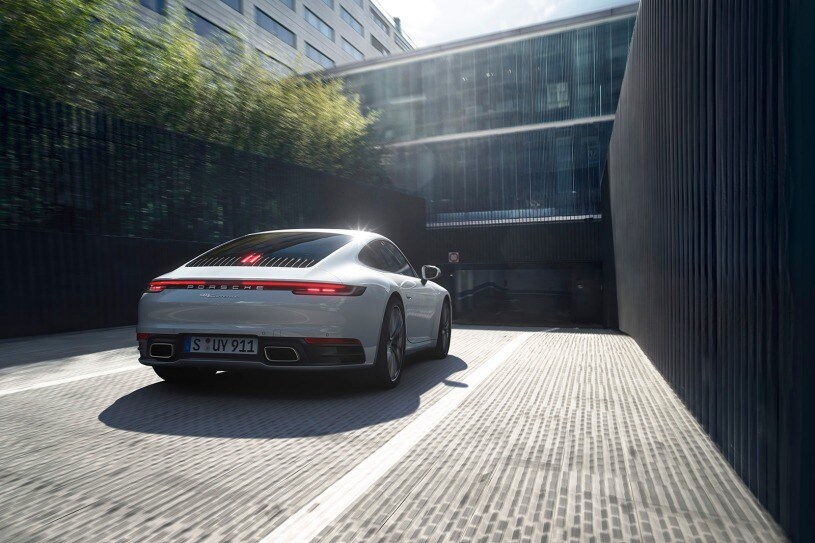
Why does it matter?
The 911 has come a long way since the 1970s, when the front-engine Porsche 928 coupe was developed to replace it. Instead, the 928 only made it through a single prolonged generation, bowing out in the mid-'90s, while the 911 has rebounded to become one of the world's premier sports cars, regardless of price. In fact, the 911 has been through no fewer than five generations since those dark days — 964, 993, 996, 997, 991 — and now there's a new generation for 2020, the 992.
At a high level, the 992 picks up right where the 991 left off, pairing supercar-adjacent performance with everyday drivability, but adding key enhancements like a new customizable digital instrument panel and a greatly improved central touchscreen. The tendency at Porsche is to roll out new 911 variants slowly as a generation gets underway, but shoppers can already choose from rear- or all-wheel-drive models with multiple levels of power and grip. In the RWD category, there's the base 911 Carrera and the more aggressive 911 Carrera S, while AWD fans can look to the 911 Carrera 4 or 911 Carrera 4S. The Carrera and Carrera 4 share a twin-turbo 3.0-liter flat-six engine rated at 379 horsepower and 331 lb-ft of torque; the S models, meanwhile, get a beefier 3.0-liter unit good for 443 hp and 390 lb-ft.
Why does all that matter? Because the 911 is Porsche's halo car. It's supposed to be the perfect driving machine, or at least as close as you can get to perfection for the money. Purists may continue to bemoan the demise of Porsche's delightful naturally aspirated flat-six engines, but the move to turbocharging across the board has undoubtedly pushed performance to a new level. The 911 always matters, but with expectations at an all-time high, the pressure is squarely on the 992 to deliver.
What does it compete with?
The redesigned 2020 Chevrolet Corvette comes at the 911 from a lower price point, as does the flawed but fierce Jaguar F-Type. But the 911 really competes with every premium sports car in the world, from the Audi R8 up to true exotics from Ferrari, Lamborghini and McLaren. You might pay less for a 911 (although Porsche's endless options list can close that gap rapidly), but it would be hard to argue that you're getting less car.
Edmunds says
The redesigned 2020 Porsche 911 doesn't stray far from its predecessor's successful formula, but key infotainment updates make it feel every bit the modern luxury sports car. If you need one performance car that can do it all, the 911 is at the top of a very short list.
2020 Porsche 911 Carrera S First Drive
Porsche's Venerable Sports Car Grows Slightly Quicker, Bigger and Pricier
Porsche doesn't do revolution. If you want that from your next sports car, you should wait for Chevrolet and its next-generation mid-engine Corvette. Instead, the redesigned 2020 Porsche 911 epitomizes what this automaker does so well: subtle evolution. After a day behind the wheel on a racetrack and public roads in Spain, we can report that the new Porsche 911 sticks to what works but does just everything a bit better, too.

What's Different About It?
Rather than wholesale change, the eighth-generation 911 — the 992, as Porsche calls it — is a product of continual honing.
Much of the bodywork, interior and underlying construction is new. But it's hard to tell that from just a glance. Part of the reason is that the 911's size has barely changed. The wheelbase remains 96.5 inches long, and you'd need less than the first inch of a ruler to measure the differences in length and height.
Width is a different story. Where previous 911s were differentiated by standard- and wide-body variants, the new 911 only comes in the latter (so far, anyway).
Aficionados will likely notice the updated bumpers, including the light bar that runs across the width of the rear. Owing to the constant yet gradual swelling of 911 proportions, the rear wheels have grown to 21 inches in diameter. The fronts remain 20 inches.
Porsche is using more aluminum and less steel in the 911's construction, but overall weight has increased by around 160 pounds. Much of the weight gain comes from the hardware needed to support the future 911 hybrid that will likely be coming out in a few years.
More Weight, More Power
The 2020 911 is first available as the rear-wheel-drive Carrera S or all-wheel-drive Carrera 4S — the S designates the second rung on the 911 ladder. A less expensive non-S Carrera enters production later in 2019. You can expect the usual onslaught of ever-faster GTS, Turbo and GT3 versions to follow after that.
Regardless of drive wheels, the 911 Carrera S comes with a twin-turbocharged 3.0-liter flat-six engine that makes 443 horsepower and 390 pound-feet of torque. Those figures represent modest improvements of 23 hp and 22 lb-ft of torque compared to last year.
A new eight-speed dual-clutch automatic transmission (PDK in Porsche-speak) comes standard. The addition of an eighth gear permits a wider spread of ratios, improving both acceleration and fuel economy. Gears six through eight are overdrive, and top speed is attained in sixth. A seven-speed manual transmission will be available later this year.
True, you can get dramatically more power from less expensive American sports cars. But the 911 has always been a car that somehow punches above its weight class. Porsche claims that, with the automatic and launch control, the new 911 rips from 0 to 60 mph in 3.3 seconds and clears the quarter-mile in 11.7 seconds for rear-drive models. Considering that the previous-generation 911 was quicker than that in our testing, we expect even better numbers when we get our hands on this 911 for a full test.
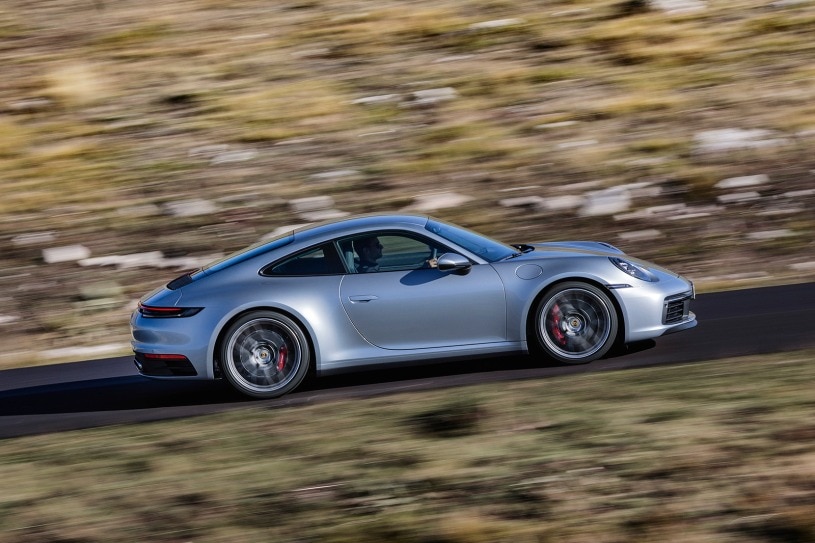
What's It Like to Drive?
The one area that hasn't changed is the driving experience. Engage launch control and the 911 tears away from a stop with greater acceleration than its power figures suggest. The shifts are immediate and smooth, and the entire car relays an immediate and easy sense of control through the first series of corners.
The engine revs cleanly to redline, offering a strong pull that doesn't relent until you're in the limiter. You can hear the turbochargers build boost when you romp on the gas pedal, but there's also a strong mix of engine and exhaust noise. The whistle and howl make for a pleasing combination.
Regular 911 models have always balanced sporty handling with comfortable road behavior, and that merger remains true here.
Standard adaptive suspension dampers and available adaptive anti-roll bars provide flat and sure-footed handling but not to the detriment of ride quality. Available rear steering enables both nimble low-speed maneuverability and high-speed stability.
A few laps around a racetrack reveal that little has changed with the 911's dynamic abilities. This car is easy to drive fast. It pivots quickly into corners, and it has ample traction and power to exit with authority. As with all recent 911 generations, the car's balance remains on the stable side, but skilled drivers can extract plenty of adjustability.
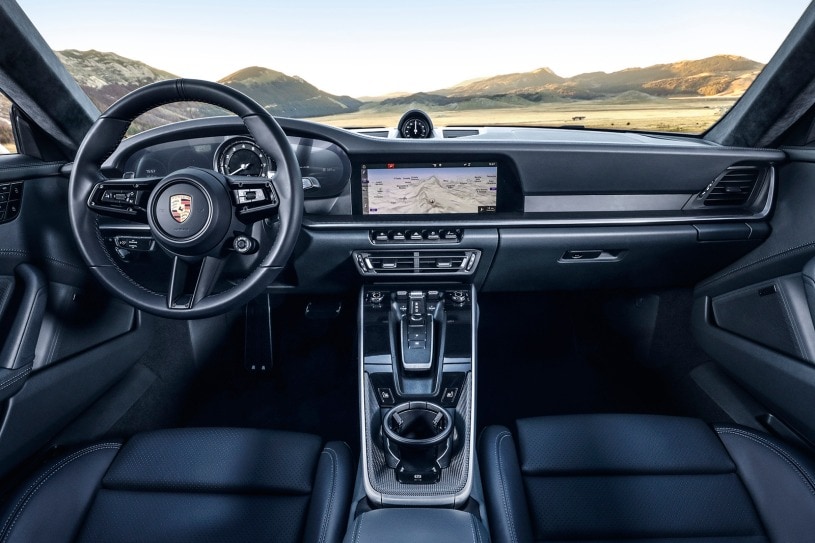
What's the Interior Like?
The easiest way to tell a new 911 apart is by looking inside. The familiar themes remain but with an embrace of modern design and function. The ignition, for example, still sits to the left of the steering wheel. But instead of a button, it's a permanently installed key you twist to start the car.
The gauge cluster hosts a gorgeous analog tachometer that resembles a watch face. It's flanked by two digital displays that can show neat tricks such as navigation or night vision (if optioned). The default display mimics the five-dial gauge cluster the 911 has had since its introduction. It all looks great, but the steering wheel blocks the outer portion of each screen, requiring head movement to see your fuel level.
The gear selector is new, and it looks like a small electric shaver. Instead of grasping it, you sort of pinch it at the top and pull or push it through clearly defined detents. A beefy shifter it's not. But it works, and there's enough feedback to know whether you've selected Drive or Neutral.
Porsche has added a bigger infotainment display (10.9 inches) and moved it up to the top of the dash. The relocation is meant to make it easier to look at the screen while driving. Beneath it are five switches whose functions change depending on options. There's been a clear effort to reduce the number of buttons on the instrument panel, so some functions require diving into a submenu. Performing a 911 pre-flight checklist — setting the exhaust to loud, turning off stop-start, and so on — becomes a nuisance unless you save your ideal settings under the one customizable drive mode.
Every 911 comes with Apple CarPlay standard, though Android Auto remains unavailable. Porsche says the 911 is ready for it, but that negotiations remain ongoing with Google.
Interior storage options are tight, with just enough room to accommodate a large phone in the center console and a few small personal items. We appreciate the addition of a real cupholder behind the gear selector, especially how you can remove it for a bigger cubby underneath.
On the downside, the piano black on the instrument panel collects scuffs and smears quickly, and the hard surface on the left side of the center console can hurt your right knee if you use it as a brace while driving quickly.
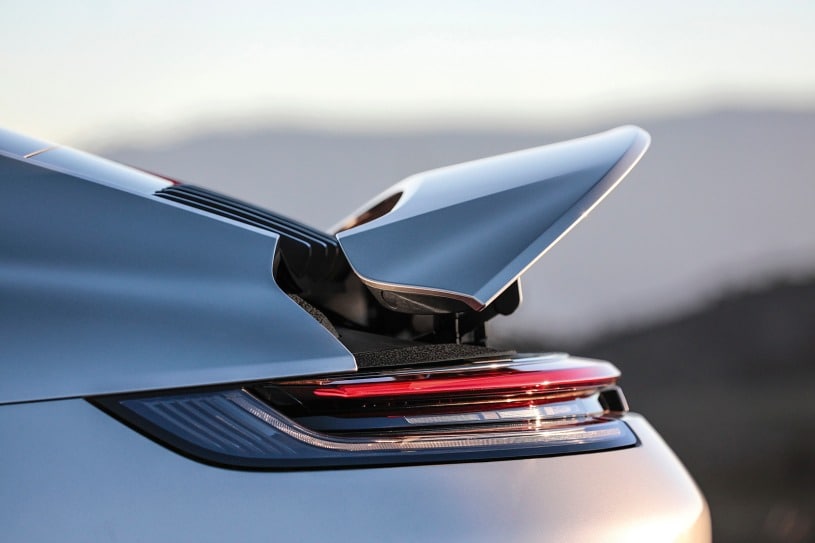
What's New With Safety Technology?
Along with the usual array of adaptive cruise control, lane keeping assist, and the aforementioned night vision, the 911 also has a trick system for the rain. A Wet drive mode adjusts parameters for the stability control, antilock braking, throttle and other systems to provide better safety on soaked roads. Acoustic sensors in the wheelwells can detect a certain threshold of water spray, and the 911 uses that info to adjust the stability control and anti-lock brakes as well as recommend activating this mode when needed.
The effects of the system were noticeable on a wet handling course. We tried to spin the 911 out, and the system cut back the power wheelspin to keep the car stable. The real-world benefits are less clear. You have to activate Wet mode (thankfully) manually, and you won't notice its effects if you drive responsibly in the rain. On the other hand, it's hard to argue with the largely invisible adjustments to the stability systems this technology makes. Worst case? Ignore it and drive responsibly.

2020 Porsche 911 Pricing and Release Date
Unless you're looking at the interior, the new 911 doesn't immediately display the changes that one expects with a new generation. And starting at $114,550, including destination, it carries an $8,000 price increase over the equivalent model from the last generation. Porsche points to more standard features, such as the automatic transmission, heated seats and auto-dimming mirrors, as part of the reason for the increase. Our fully loaded test car totaled $160,850.
After shelling out that kind of coin, you might find it strange having to explain to your friends that the Porsche in your driveway is, indeed, the new 911. There's also the fact to consider that the 911 always improves, at times significantly, through the lifecycle of a generation. A carefully sourced previous-generation 911 could provide more value for selective shoppers.
But if you don't care about bragging to your friends, the new 911 is quicker, more luxurious and nicer to drive than ever before. The interior upgrade in terms of look and feel might be worth it alone. So for those seeking the latest and greatest, these attributes make it an easy pick.
The 2020 Porsche 911 Carrera S reaches dealerships in the summer of this year.
Notably, we picked the 2020 Porsche 911 as one of Edmunds' Best Luxury Cars for this year.
2020 Porsche 911 Carrera S and 4S Cabriolet First Look
The 2020 911 Carrera S and 4S Get Variable Headroom
Since 1983, as sure as the sun has risen, Porsche has offered its 911 in drop-top form alongside its iconic coupe. So it doesn't come as any surprise that Porsche's upcoming 2020 911 Carrera is going all Malibu with a Cabriolet version. But as we're still unpacking the futuristic styling on the coupe, it will be interesting to see how the new design translates into convertible form.
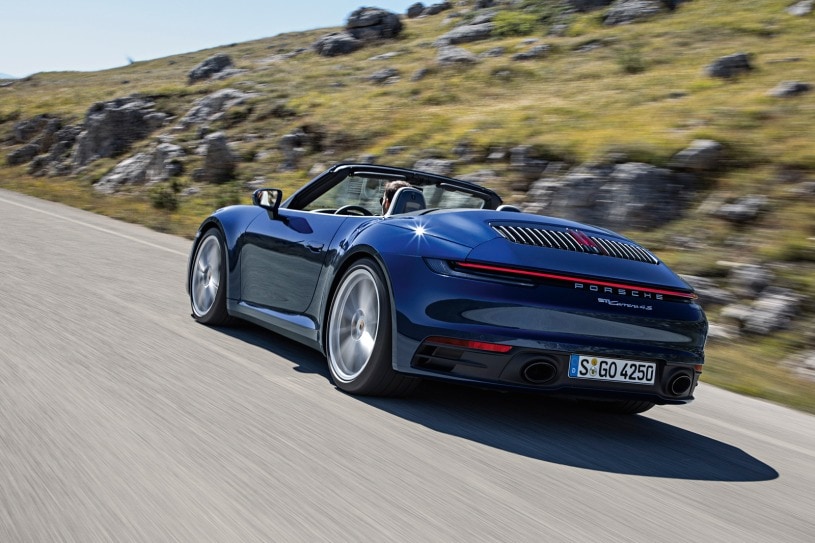
What's New?
Along with everything we learned when the 2020 911 Carrera Coupe debuted at the Los Angeles Auto Show, the Cabriolet gets a few enhancements of its own. Starting at the top (or with the top), there's a solid glass rear window along with bits of magnesium in the framework for the roof. Also worth noting is that the top remains fabric as Porsche continues to resist the use of a retractable hardtop. Porsche claims the cloth top can be raised or lowered in around 12 seconds at speeds up to 31 miles an hour — perfect for sneaking in that low-speed convertible selfie without having to obliterate your hairstyle.
But the new drop-top isn't just a style exercise. Porsche has made Porsche Active Suspension Management (PASM) available as an option for the first time on Carrera S and Carrera 4S Cabriolet models. This sport suspension gets you stiffer springs, redesigned shocks, different sway bars, and a ride height that's 0.4 inch (10 mm) lower than the standard suspension. Previously, this suspension has only been available on the Carrera S and GTS coupes. Based on our experience with those models, we can say PASM guarantees some formidable handling capabilities, so we'd suggest checking the box for the adaptive 18-way sport seats to help keep you in place in the corners.
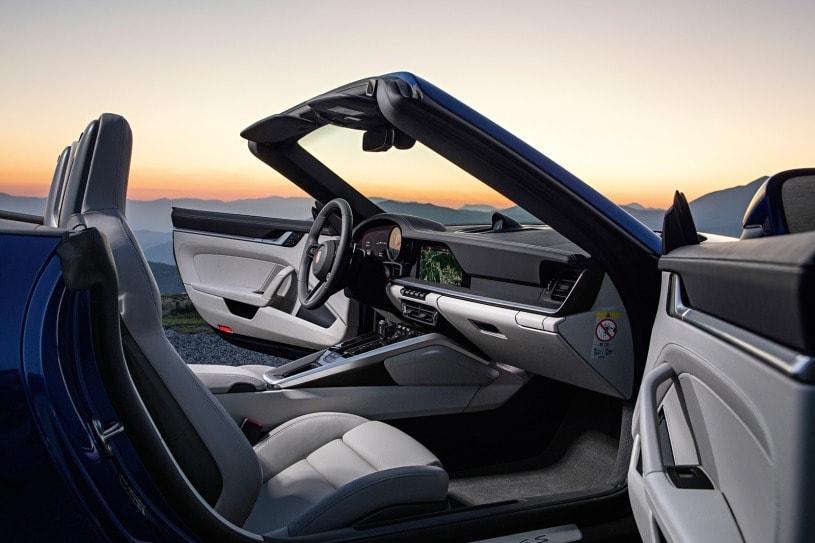
It Won't Be Slow
The Cabriolet's performance is expected to be just shy of mind-boggling, thanks to the upgraded 443-horsepower twin-turbo 3.0-liter engine the convertible shares with the coupe. Porsche claims the two-wheel-drive Carrera S will hit 60 mph in 3.7 seconds, with the all-wheel-drive 4S pipping it by a tenth of a second at 3.6 seconds. Plunking down for the Sport Chrono package will knock an extra 0.2 second off both of those times. Initially, only the eight-speed PDK dual-clutch transmission will be offered, but we can expect a manual gearbox to arrive at a later date. Oh, and top speeds are limited to 190 mph for the S and 188 mph for the 4S, should you live in a world without laws (or with an autobahn).
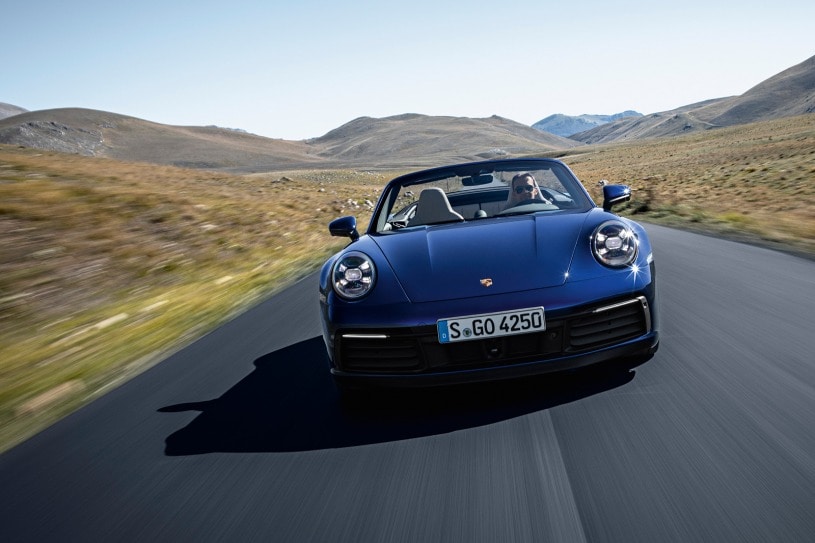
Order Now
If you want to make the most of glorious late-summer driving weather, it's best to order your 2020 911 Cabriolet now as they won't reach dealers until just before fall. Prices start at $127,350 for the Carrera S Cabriolet and $134,650 for the 4S Cabriolet; both include destination charges. Stay tuned to Edmunds for more details, driving impressions, and a full review once we can get our hands on the car and the wind in our hair.
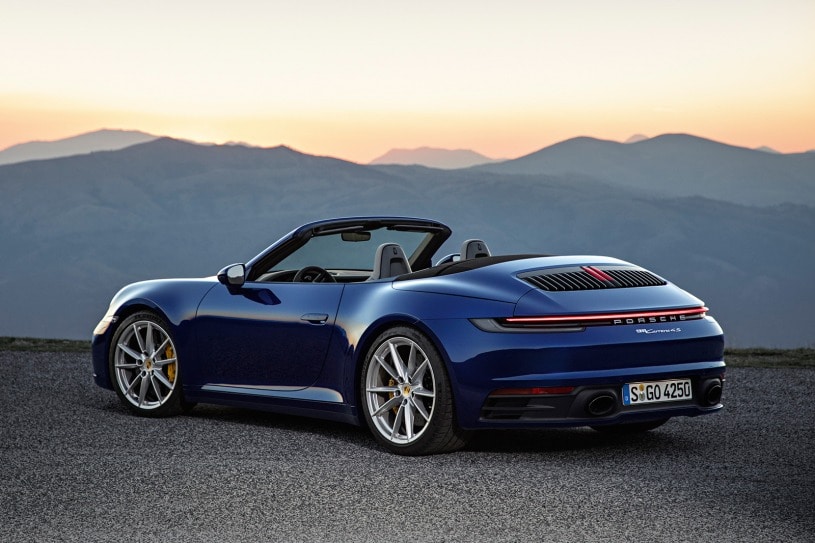
Reinventing an Icon: 2020 Porsche 911
The Details Behind the 992's Subtle Evolution
We've ridden alongside the development team in and around San Francisco, seen it revealed in L.A., and now we're at the Hockenheimring in Germany with the redesigned 2020 Porsche 911. The mission here is to take an in-depth look at the technical details of this new 992 generation. Time moves on, and the 911 has to evolve with it. Facing confident challengers from all corners, is Porsche's reinvented icon up to the task?
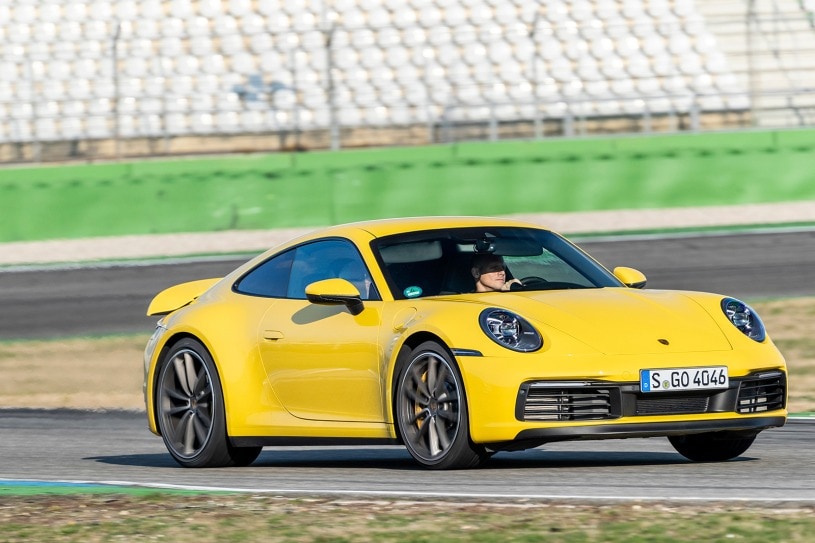
More Is More
This 911 is bigger, more comfortable, more efficient, yet faster again. It will lap the Nürburgring 5 seconds quicker than its predecessor did — a pointless yardstick in reality, but the 7 minutes and 25 seconds it takes a 911 Carrera S to do the deed betters what Porsche used to manage with its V10 Carrera GT hypercar. This, remember, is a refined coupe that's just as happy collecting the groceries as it is setting blistering times around Germany's most famous racetrack.
At a glance, the engine in Carrera S specification is similar to its predecessor, displacing 3.0 liters and featuring a pair of turbos. But much has changed behind the curtain, from the intake and intercoolers to the exhaust plumbing and the size of those turbos. The result is 443 horsepower, a 23-horse improvement to go with the expected uptick in fuel economy. A quirk of U.S.-spec cars is that they do without the particulate filter in the exhaust, allowing a slightly earlier torque response compared to the Euro spec.
Fully unleashed, the Carrera S with the PDK automatic transmission will do 0-60 mph in 3.5 seconds, or 3.4 seconds if you opt for all-wheel drive with a Carrera 4S. Per usual, the optional Sport Chrono package adds a dash-top timer and launch control, which shaves 0.2 second off either time. Suffice it to say that the 992 is unlikely to disappoint shoppers with a need for speed.
Faster but Safer
The 911 has always had excellent brakes, but the 992 stops better than ever. It drops 3 feet off its 60-0 mph braking distance, and nearly 40 feet should you need to stop briskly from 186 mph. During stops from high speeds, the rear spoiler, which goes up at 55 mph, raises its angle of attack to work as an air brake, not just helping to slow the car but increasing stability while doing so.
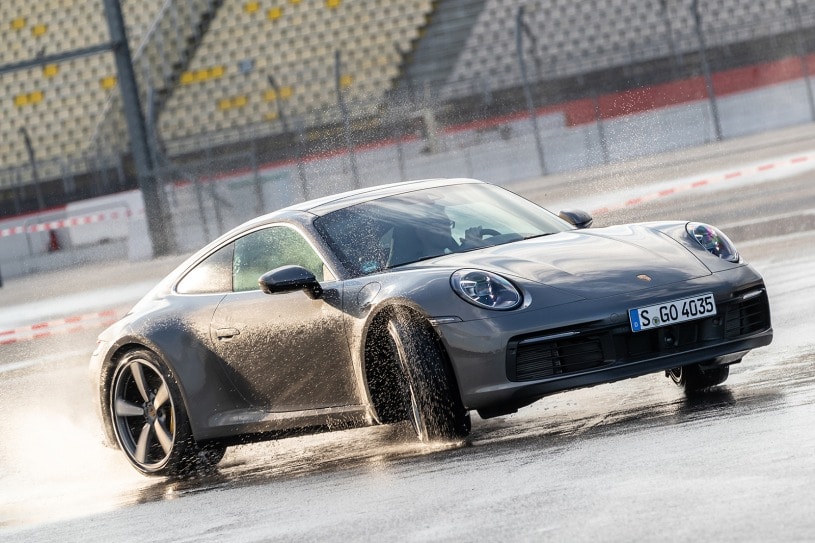
Porsche has also achieved the tricky task of making the rear-engine 911 a safer, more predictable car in the wet. The new driver-selectable Wet mode monitors moisture on the road via sensors mounted in the front wheelwells. If wetness is detected, the stability control and braking systems are primed for a quicker response. Around a soaking course laid out at the Hockenheimring, with Wet mode activated, Porsche test driver Timo Kluck couldn't get the 911 to misbehave. Impressive stuff.
In addition to the Wet mode, the 911 now has options such as lane keeping assist, active cruise control with stop-and-go capability, and a night-vision system for spotting pedestrians and animals. There's also a standard brake-assist program that will warn you if you need to brake to avoid an accident or automatically initiate emergency braking if necessary.
Sports Car at Its Core
No need for those safety aids on the full track of Hockenheim, where, unleashed from the impressive electronic shackles of Wet mode, test driver Kluck reveals the other end of the 911's capabilities. What's clear is that performance remains a top priority for the new 911, with huge grip, sensational braking and that characteristic flat-six warble from astern. It doesn't hurt that all 992 Carreras — whether rear- or all-wheel-drive — will come with wider front and rear tracks that match those of the outgoing Carrera GTS.
Ask the engineers, though, and they'll quietly admit that the wider front track is actually the result of a need to increase the capacity of the cooling system. The handling improvements were a fringe benefit. The greater cooling demands also prompted the enlarged openings around the 911's nose, with bigger radiators situated behind automatically adjusting front vents.
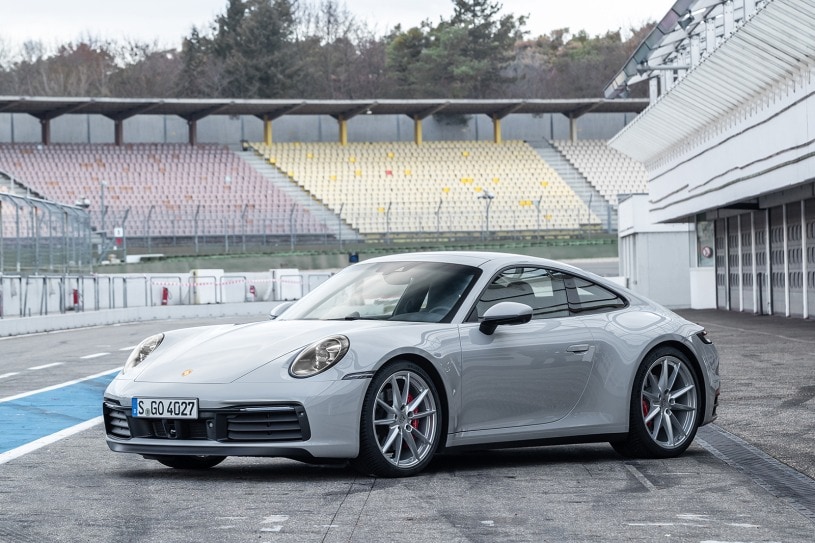
Weighty Issues
The 992 does pack roughly 150 extra pounds. Though, with the increased dimensions, larger wheels (20-inch fronts and 21-inch rears come standard) and all that additional equipment, the weight gain isn't too surprising. At least Porsche has minimized the problem by building the body more extensively from aluminum. The side panels alone save 26.5 pounds over the previous 911's steel items. The body is significantly stiffer at the front, which is said to help cure the 911's traditional rolling noise from the front wheels. It also aids with steering response, so the weight gain comes with some benefits.
What's Next
With the new Carrera S and 4S already available to order, the only thing left for us to do is drive them. Stay tuned for our full impressions from behind the wheel.
First Look: 2020 Porsche 911
Meet the Eighth Generation of Porsche's Icon
In a world beset by constant upheaval, the 2020 Porsche 911 is a tribute to the benefits of gentle evolution. The eighth generation of the 911 (known to aficionados by its internal code name, "992") is instantly familiar. Slightly bigger, slightly faster and, yes, slightly more expensive than before, it will reach U.S. showrooms next summer as a Carrera S, priced from $113,200.

Same Shape, More Muscle
We've already had an exclusive first ride in the new car, but this is the first time we've seen it without its ugly disguise. Only the most dedicated 911-spotter will identify the subtle hood sculpting that characterizes the new car's nose, but the revisions at the back are more pronounced. The red LED strip that spans the rear has become a signature feature of all contemporary Porsches, and the haunches are now more prominent. Couple this with wheels that measure 20 inches at the front and 21 at the rear and you have a sports car with considerable presence. Porsche's stylists have done a tremendous job of updating their icon without offending the purists.
All in the Family
The changes inside also echo other recent Porsche models, notably the larger Panamera. The central touchscreen control system has grown from 7 to 10.9 inches, and there are five buttons that give immediate access to the key functions. In the best 911 tradition, the driver's attention focuses on a centrally mounted tachometer, which is flanked by circular digital displays offering a wealth of information. The perception of quality is excellent, and the 911 retains the practical benefits of rear seats and a decent front trunk. The only curiosity surrounds the gear selector — gone is the chunky leather lever, to be replaced by a stylized switch on the center console. We suspect the Porsche forums won't like it.

Hauling the Mail
They will be impressed by the performance figures, though. The rear-wheel-drive Carrera S and all-wheel-drive Carrera 4S now boast a 443-horsepower, 3.0-liter flat-six turbo engine, a 23-hp improvement on the outgoing motor. There's also a new eight-speed PDK flappy-paddle gearbox, with a seven-speed manual to follow. Porsche claims the S will sprint to 60 mph in just 3.5 seconds, which is 0.4 second quicker than the previous-generation car. The 4S, helped by all-wheel-drive traction, should do the deed in 3.4 seconds. Top speed is 191 mph for the S and 190 mph for the 4S.
To help drivers manage all this capability, Porsche has introduced a Wet mode, which will be fitted as standard. This new feature automatically senses water on the road and adjusts the stability control and braking systems to suit. It also alerts the driver, just in case he hadn't noticed the rain(!). There'll be plenty more new technology in the 2020 911, including a night vision assist system that uses thermal imaging to detect objects in the road ahead.

Pricing and Release Date
The rear-wheel-drive 2020 Porsche 911 Carrera S will be priced from $113,200, with the 4S starting at $120,600. For the S, this represents an $8,100 increase over the outgoing model, while the 4S rises by $8,600. In the finest Porsche tradition, they'll be followed by the entry-level Carrera together with Cabriolet, Targa, Turbo, GTS, GT3 and other derivatives in the months and years ahead. There will even be a hybrid 911 for the first time — no one exploits the value of a trim and engine package better than Porsche.
The Bottom Line
We're due to drive the new 911 in January before it reaches U.S. showrooms next summer. We'll reserve judgment until we've tested it, but given that the outgoing 911 tops our rankings for luxury sport coupes, it would be a major surprise if it didn't establish a new benchmark in its sector. Despite over a million having been built since 1963, the world's fascination with the 911 shows little sign of abating.
Exclusive: 2020 Porsche 911 First Ride
On the Road in the All-New 992 Generation
LA Auto Show, late November. That's when you'll see the next-generation Porsche 911, which is already known to the Porsche faithful by its internal code name: 992. Yet we've been in the new car already, albeit disguised — at least as much as you can hide the iconic shape of a 911.
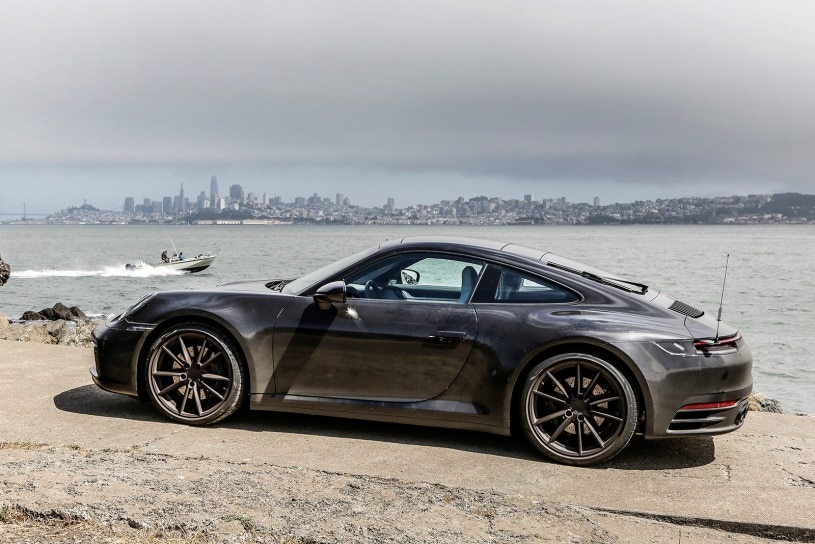
Our sneak preview materialized when we heard that some Porsche personnel would be coming to the San Francisco Bay Area to shake down a few preproduction 992 models prior to the LA launch. We met them there and managed to hitch a ride in a convoy of Carrera S coupes.
So, is the 992 a worthy successor? The definitive answer will have to wait for our full testing in the months to come.
But you can learn a lot about a car from the passenger seat. Especially one as hotly anticipated as the latest Porsche 911.
Back to Cali
San Francisco and its surrounds were chosen for their diverse topography and weather, as well as for the "aggressive" — Porsche's word, not ours — driving style of the locals. The factory drivers, meanwhile, were evidently assembled as an all-star team. We had Alex Ernst, testing team leader; Andreas Pröbstle, project manager for the 718 and 911; Matthias Hofstetter, director of powertrain product lines for the 718 and 911; and August Achleitner, vice president of the 718 and 911 product lines, who is often referred to as "Mr. 911."
There's nothing these gentlemen don't know about the 992, and we tapped them up for as much as they were willing to say. We were also treated to some suitably enthusiastic driving to get a taste of what this new 911 is all about.
Does It Still Drive Like a 911?
First things first — as much as we can tell from the passenger seat, the answer is yes. We sat alongside every driver on Porsche's team at various points on the route, and it's clear the 911 has lost none of its urgency, the turbocharged low-rev punch and still-enthusiastic quest for revs delivering huge, immediate pace.
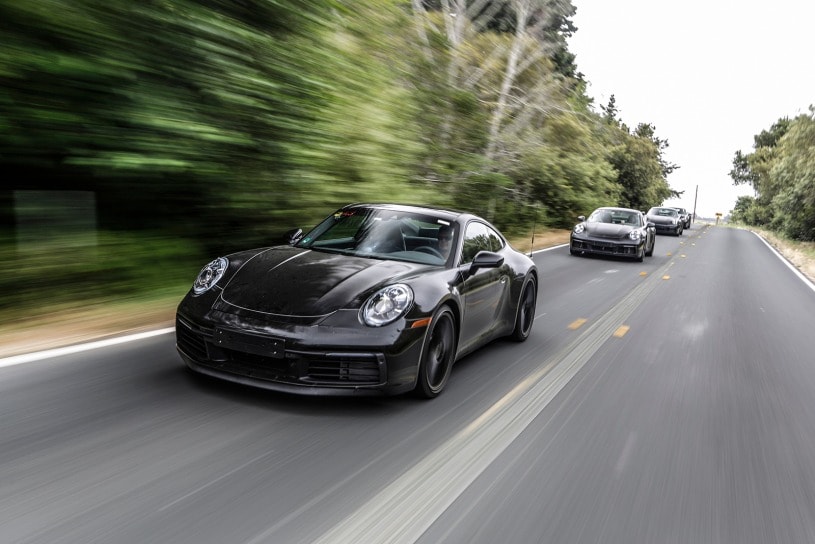
The chassis is a great match, too. You can feel the suspension coping with the vagaries of the regional tarmac, riding with real composure while maintaining excellent control. The flat-six sounds good, too, particularly the U.S.-specification exhaust, which does without European cars' exhaust filter. For once, American buyers get something cool that Europeans can't have.
We emerge more eager than ever to get behind the 992's wheel. The LA Auto Show can't come soon enough.
Familiar Face, More Moxie
Let's be honest, the 992 was never going to look too different. The 911 is a formula that's endured since the 1960s, and with over a million cars built, Porsche isn't about to meddle with it. Recessed rear lights aside, this is all familiar 911 stuff in form and function.
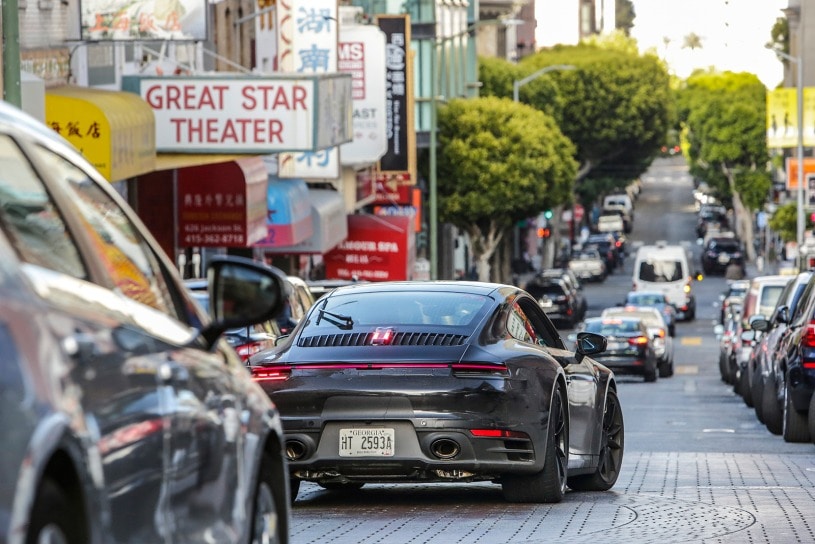
Having said that, the 911 must also outperform the car it's replacing, which is exactly what it'll do. The Carrera S model's turbocharged flat-six engine retains its 3.0-liter displacement, but improvements to the intake, turbos, intercooling, injection system and exhaust give it an imposing 443 horsepower. That's about 25 more horses than the outgoing Carrera S and on par with the 991 Carrera GTS, but with greater efficiency. It's also enough to ensure a 0-60 mph time comfortably under 4 seconds and a top speed in excess of 190 mph. You'd have had to buy a 911 Turbo not long ago for that kind of performance.
As for the standard Carrera, it should offer around 380 hp when it joins the model line next year. The LA debut of the 992 is entirely focused on the Carrera S and 4S coupe, specifically with the PDK automatic transmission.
No Manual ... and a Hybrid?
Rest assured, a three-pedal setup is on the way. It'll be offered across the entire Carrera range when that standard Carrera arrives after the S. The lineup will include both coupes and cabriolets from next year, while the Turbo and other amped-up variants should follow quickly after. There'll be a Targa and a GTS, but we'll be in for a slightly longer wait for those. The whisper is the Turbo will have in excess of 650 hp when it comes.
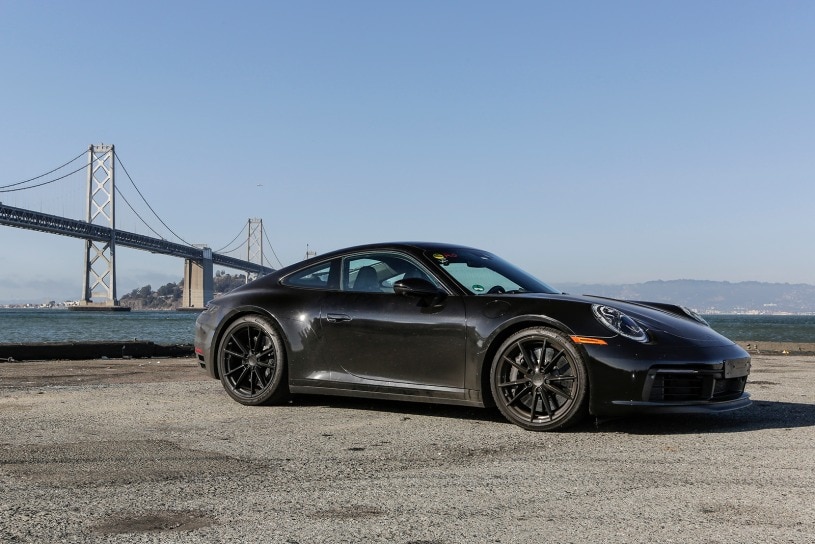
The 992's PDK automatic is big news. Unlike the manual, which remains a seven-speed unit, the PDK gains a ratio to become an eight-speed gearbox. This version of PDK been re-engineered from the transmission in the Panamera, with "Mr. 911" Achleitner admitting that they have "prepared this car for a hybrid solution in the future." To wit, the transmission has space in it for an electric motor.
As powertrain guru Hofstetter put it, "the car is ready for hybrid. We can't change the wind, but we can set our sails in the right direction." Achleitner added: "The whole car in its layout, its structure, is prepared for a hybrid solution in the future. We will not do it right now, because we are not yet satisfied with the performance, especially of the batteries."
Incremental Improvement
Weight has been a key consideration, with the 992 anticipated to weigh much the same as its predecessor despite the changes. Revised engine mounting improves stiffness, which should be particularly beneficial in the convertible. The Carrera S upgrades to standard staggered wheel diameters, with 20-inch front wheels and 21-inch rears wearing 245/35 ZR20 and 305/30 ZR21 tires, respectively.
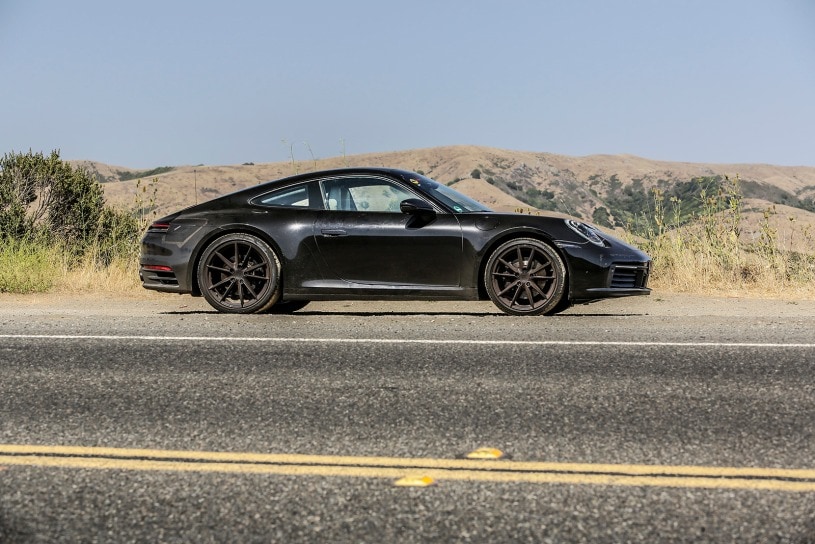
All Carreras will be also wide-bodied, which means there will be no differentiation in width within the Carrera lineup, regardless of specification. The rear width matches that of the outgoing GTS, while the front track is actually a bit wider. This tweak, says Achleitner, enables the 992 to achieve greater cornering force without needing stiffer roll bars, also allowing for a softer rear roll bar.
Agility, usability and driver appeal remain core to the 911 ethos. Achleitner underlines this, noting that "everyday usability is very important for us, hugely important. We are unique, we sell real cars, not computer games that are simulated. You have to have feel. That is essential with our cars."
Details That Make a Difference
Like the outgoing car, the 992 will offer PASM adaptive suspension and the option of rear-wheel steering. Notable extras include Porsche Surface Coated Brakes (an economical alternative to carbon ceramics), a Sport Chassis that lowers the 992 by 10 mm, and the Sport Chrono Pack, which adds items such as active engine mounts and greater configurability in the driver settings.

In addition to the familiar Normal, Sport, Sport+ and Individual driving modes, there's now a "wet mode" in all Carreras. The 992 will automatically prime its rear wing's angle of attack, as well as the stability and gearbox control systems, if acoustic sensors in the front wheel housings detect water on the road surface. This is necessary, says Achleitner, because the 911 "is light and rides on wide tires." Should the driver want full assurance when such conditions threaten, wet mode can be selected manually.
Convenience is improved with keyless entry and ignition (finally) standard in all 911s. The exterior door handles even pop out to greet you when you approach. Glancing around the preproduction 992 interior, it's evident behind Porsche's camouflage that the central touchscreen is larger, its operation and look being very similar to that of the Cayenne.
What's the Bottom Line?
We'll be able to fill in the rest of the details when the 911 is officially revealed next month, and of course when we drive it soon thereafter. Our early access reveals, though, that Porsche hasn't messed with the core appeal of its rear-engine icon, even if underneath it's quite a significant step forward.
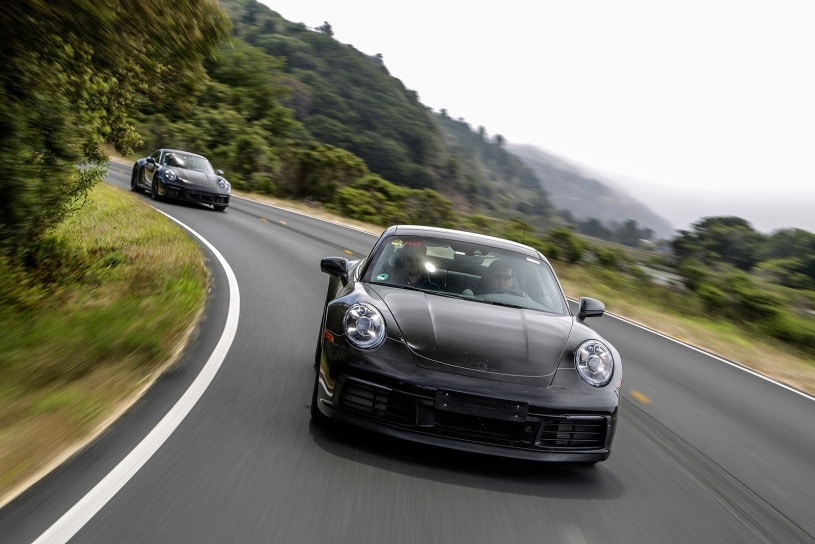
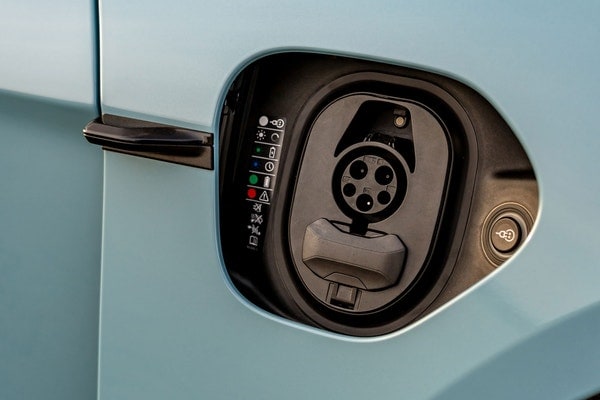

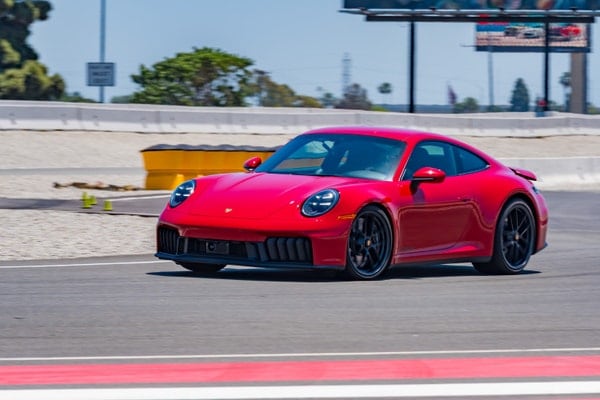
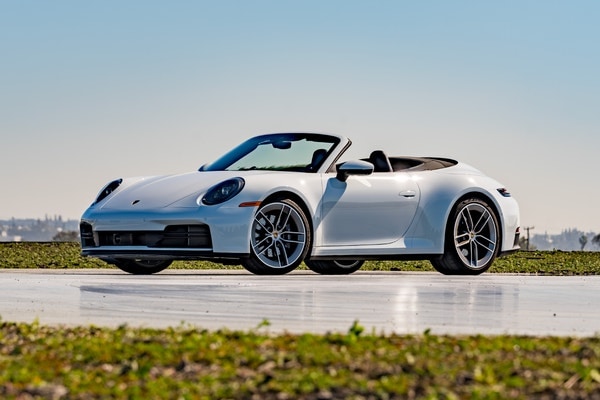
Cost to Drive
Reliability Ratings by RepairPal
Cost
for Average Luxury Midsize Car
Frequency
for Average Luxury Midsize Car
Severity
for Average Luxury Midsize Car
Porsche 911 Owner Reviews
Most Helpful Owner Reviews
Trending topics
911 Thrill machine 8K update
5 out of 5 stars2018 Grd Sport Corvette For 2020 Porsche Carrera S
5 out of 5 starsNew Porsche 992 S
5 out of 5 starsLove at first ride
5 out of 5 stars2020 Porsche 911 videos
Drag Race! Porsche 911 vs. Chevy Corvette vs. Shelby GT500 — Which Sports Car Has the Fastest 0-60?
2020 911 Highlights
| Base MSRP Excludes Destination Fee | $97,400 |
|---|---|
| Engine Type | Gas |
| Combined MPG | 20 MPG |
| Cost to Drive | $294/month |
| Seating | 4 seats |
| Cargo Capacity All Seats In Place | 4.6 cu.ft. |
| Drivetrain | rear wheel drive |
| Warranty | 4 years / 50,000 miles |
Safety
Our experts like the 911 models:
- Porsche Active Safe
- Alerts the driver about an imminent front collision and applies the brakes if necessary. It's included with adaptive cruise control.
- Front and Rear Park Assist
- Sounds an audible warning when the front or rear bumpers of the car are approaching an obstacle.
- Porsche Car Connect
- Automatically alerts emergency services in the event of an accident. Remote door locking also included.
People who viewed this also viewed
| 5.0 average Rating out of 2 reviews. |
| Starting at $68,300 |
| 5.0 average Rating out of 1 reviews. |
| Starting at $72,800 |
| Starting at $99,400 |
Related Used 2020 Porsche 911 info
Vehicle reviews of used models
- Dodge Durango 2021 Review
- Ford F 450 Super Duty 2021 Review
- Kia Sorento Hybrid 2021 Review
- Ford Escape Plug In Hybrid 2021 Review
- Lexus RC 300 2021 Review
Shop similar models
Shop used vehicles in your area
- Used Porsche 911 2010
- Used Porsche 911 2011
- Used Porsche 911 2012
- Used Porsche 911 2013
- Used Porsche 911 2014
- Used Porsche 911 2015
- Used Porsche 911 2016 For Sale
- Used Porsche 911 2017 For Sale
- Used Porsche 911 2018
- Used Porsche 911 2019
Popular new car reviews and ratings
- Mer Eqc
- 2025 Acura ZDX News
- Toyota RAV4 Hybrid 2025
- 2025 Tacoma
- Toyota 4Runner 2025
- New Tesla Model Y
- 2025 Toyota Highlander Hybrid
- Mazda CX-5 2025
- 2026 Honda Civic
- New Mercedes-Benz S-Class
Research other models of Porsche
- 2025 Porsche 911
- Porsche Macan 2025
- 2024 Porsche 911
- 2025 Porsche Panamera
- New Porsche Cayenne
- 2025 Porsche 718 Cayman
- 2024 Porsche Cayenne
Research similar vehicles
Other models
- Used Chevrolet Blazer-Ev in Huntsville, TX 2025
- New Alfa-Romeo Tonale for Sale in Broken Arrow, OK
- Used GMC Terrain in New Smyrna Beach, FL 2026
- Used Volkswagen Golf-Gti in Martinez, CA 2025
- Used Jeep Gladiator in Atmore, AL 2025
- Used Mclaren 720S in Manchester, CT 2023
- Used Ford Transit-Connect-Passenger-Wagon in Chula Vista, CA 2023
- Used Chevrolet Colorado in Pacific Palisades, CA 2025
- Used Ferrari Portofino in Haines City, FL 2021
- New Toyota Grand-Highlander-Hybrid for Sale in Grenada, MS
